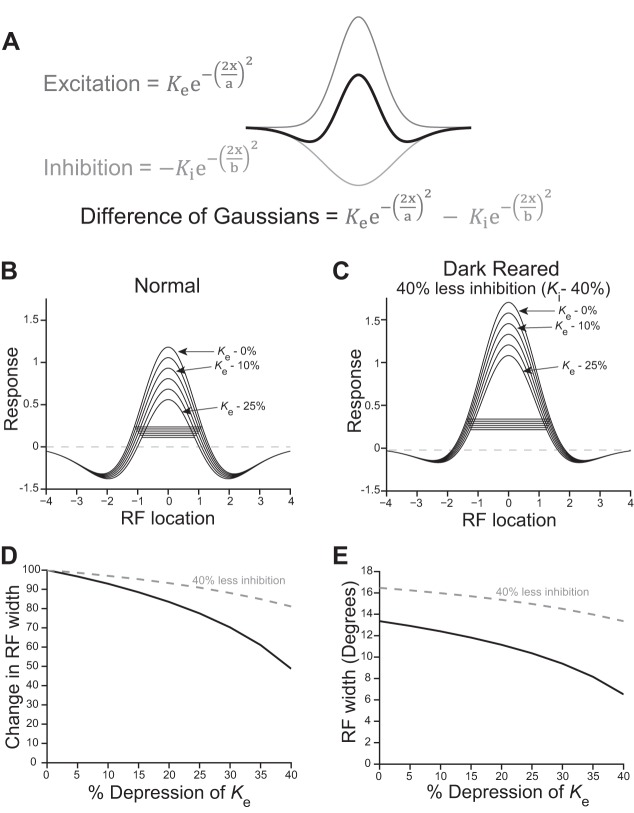Fig. 8.
Reduced STD could contribute to enlarged receptive fields (RFs) in DR animals. A: difference of Gaussians (DOG) model of SC RFs. See text for definition of equation terms. B: different levels of depression were modeled as reductions in Ke of 0–25%, in 5% intervals. The horizontal lines are the RF widths at 20% of the peak, corresponding to the method used for measuring RF widths in vivo. C: lower levels of inhibition, as is seen in slices from DR animals, cause RFs to be larger. Ki was reduced by 40% to model the reduced inhibition caused by DR. The model supports the interpretation that reduced inhibition increases RF size. In addition, the RF size in DR cases was less affected by depression than in normal cases, as can be seen in D. D: change in RF width resulting from different levels of depression (RF widths from B, black line) and resulting from both depression and 40% reduced inhibition (data from C, gray dashed line). As the level of depression is increased, RF sizes shrink more. Reducing inhibition by 40% caused depression to have less of an effect on RF size (gray dashed line). E: plotting absolute RF widths shows that the reduced inhibition increases RF size at all levels of depression (gray dashed line is shifted upward). Both increased depression and reduced inhibition caused by DR may contribute to RF enlargement.

